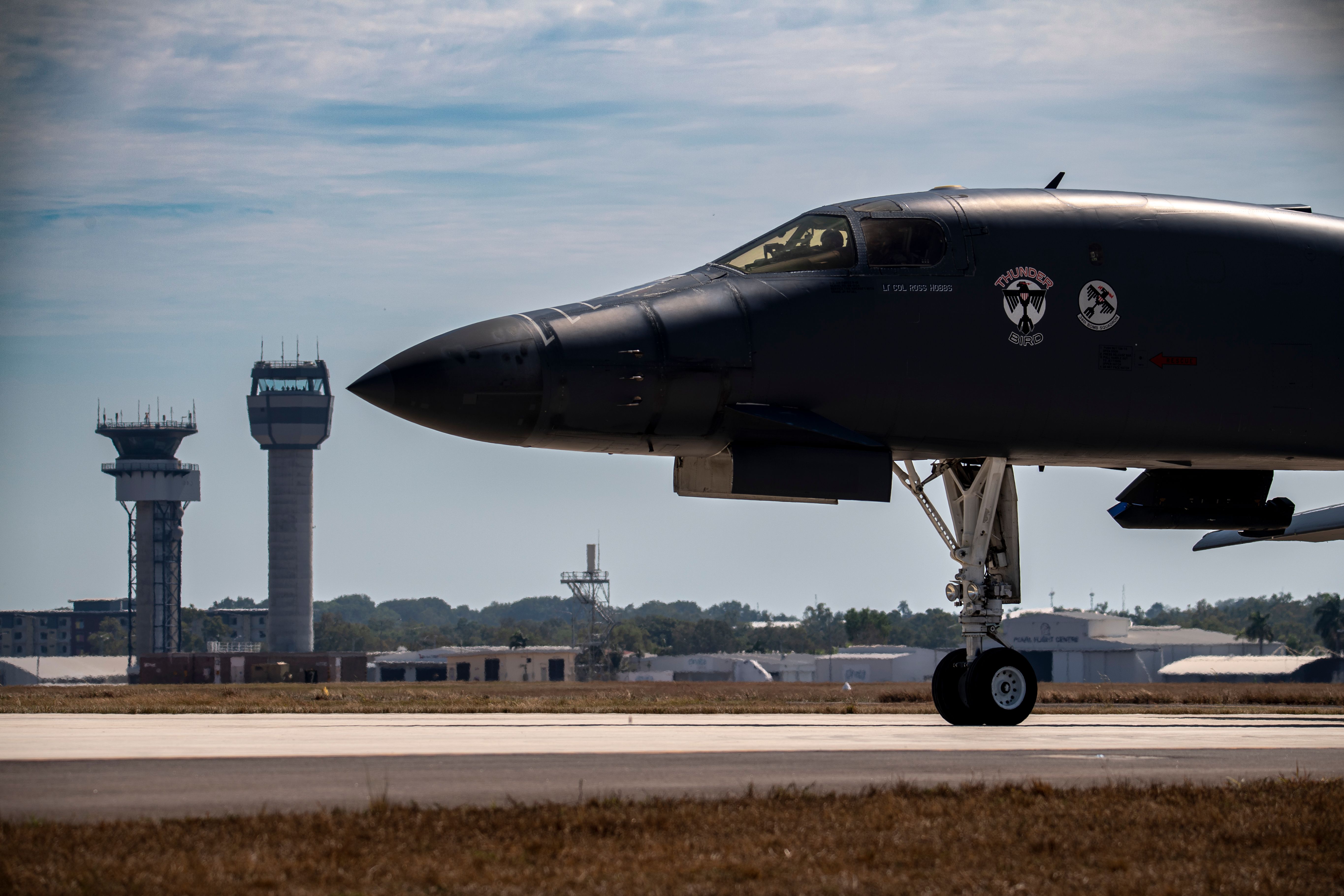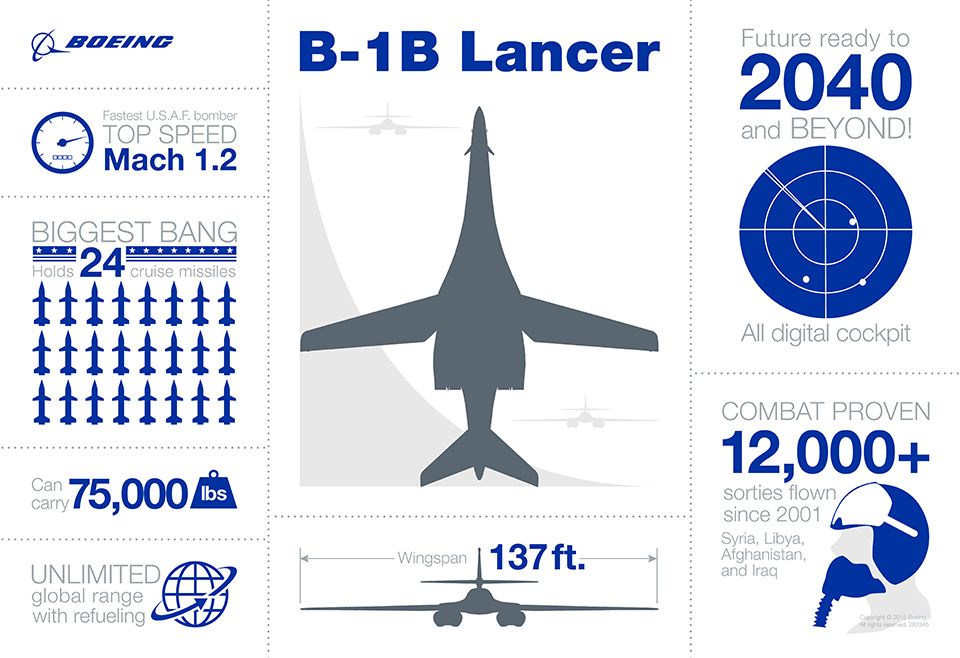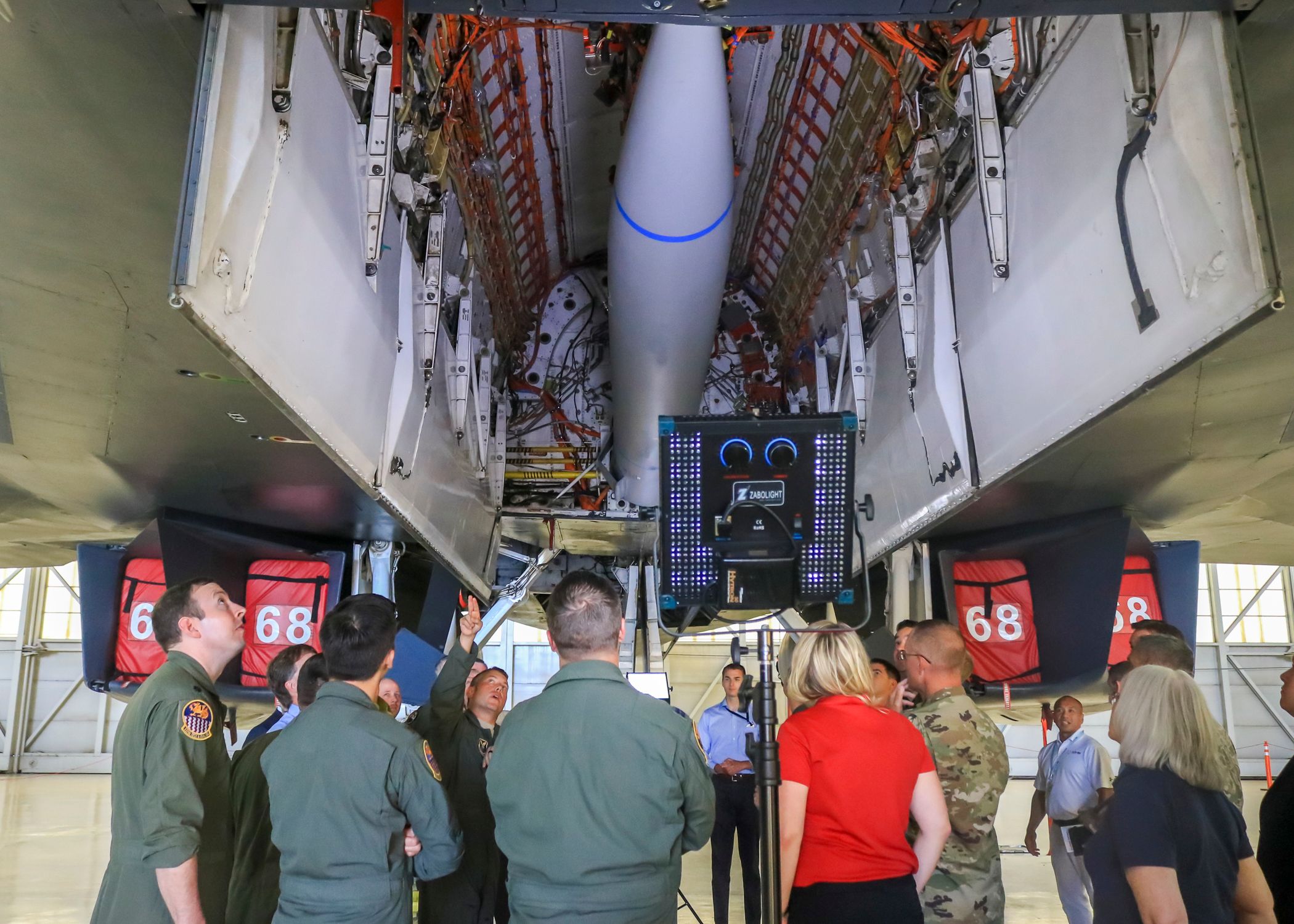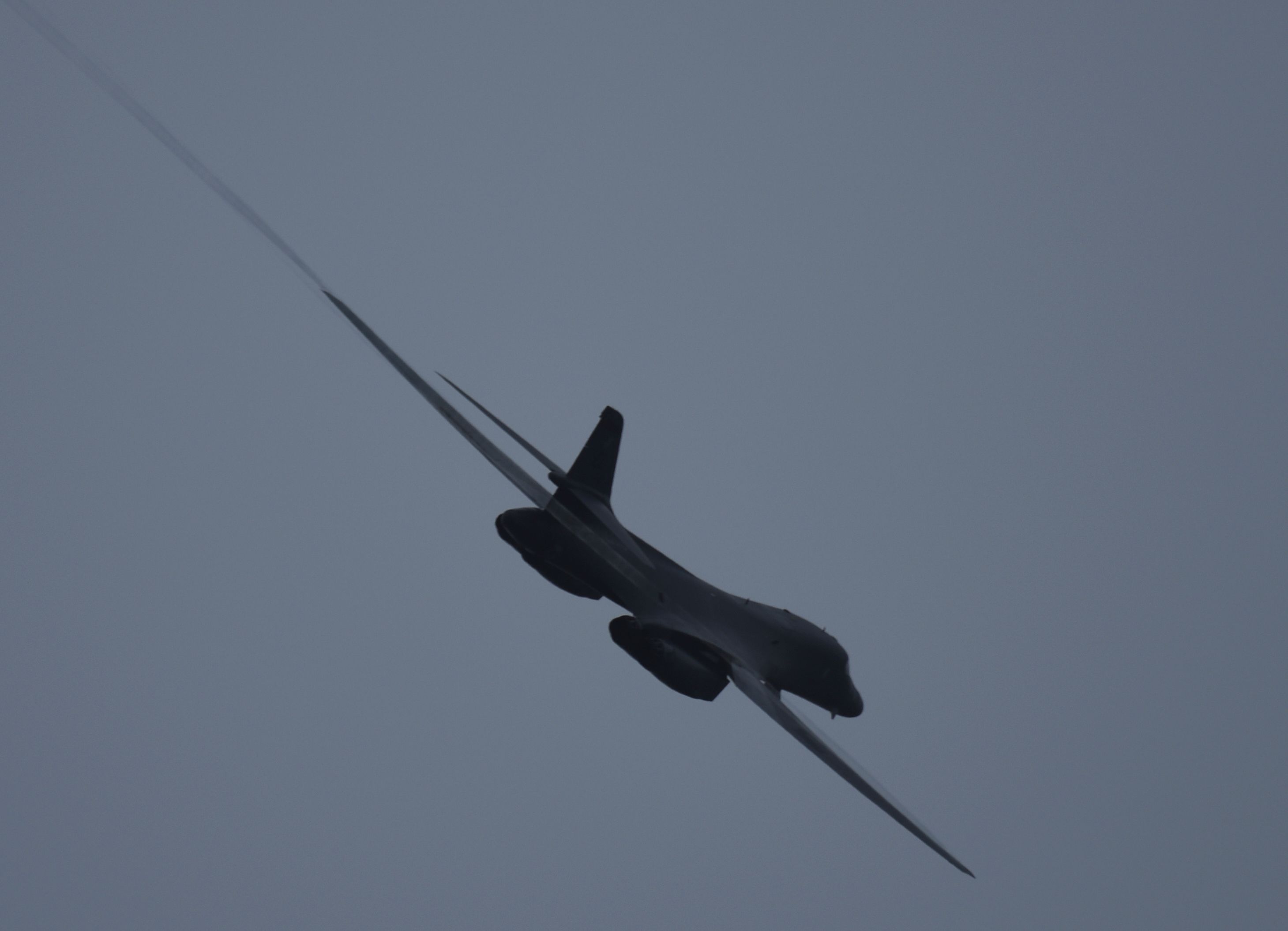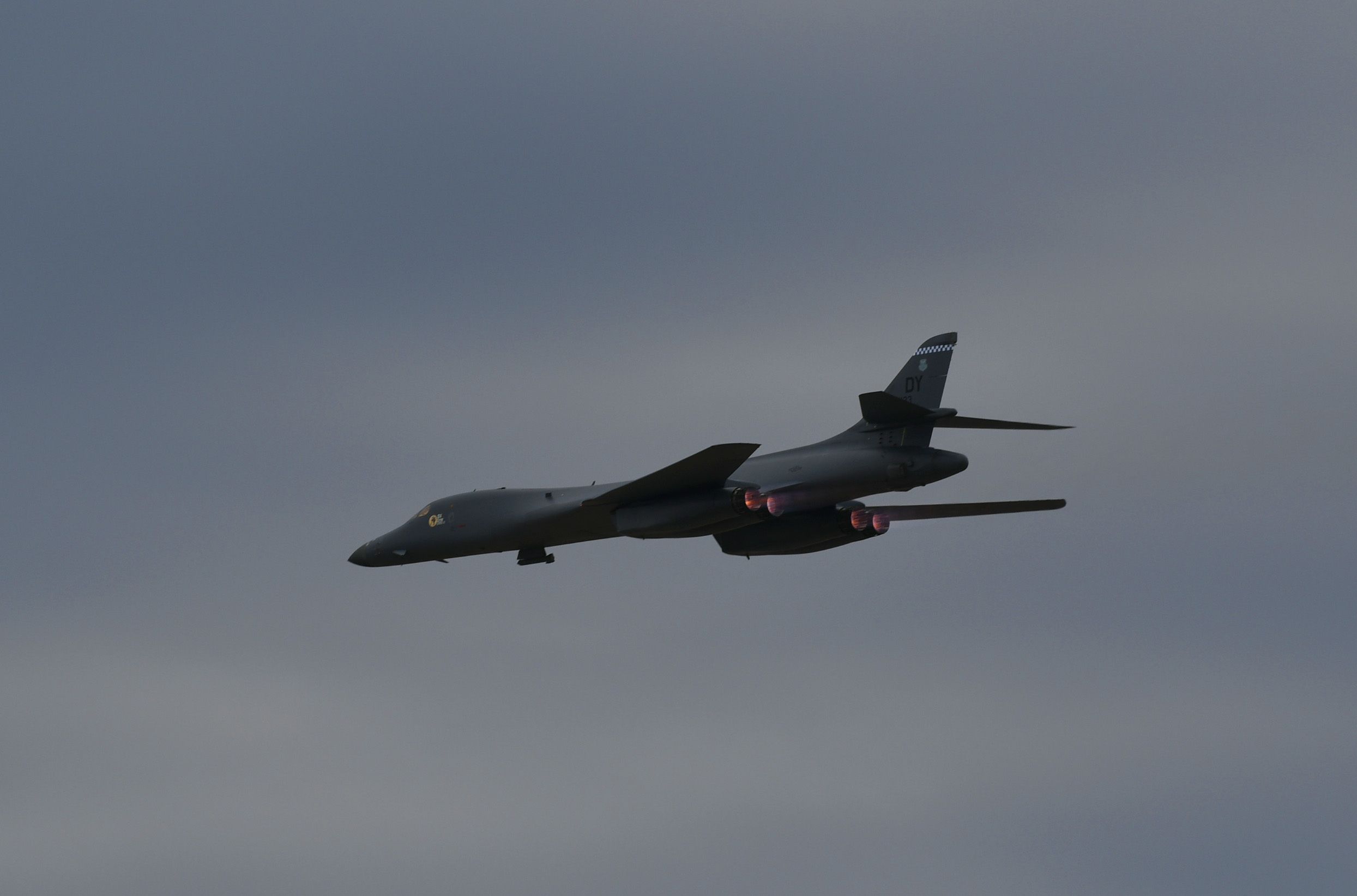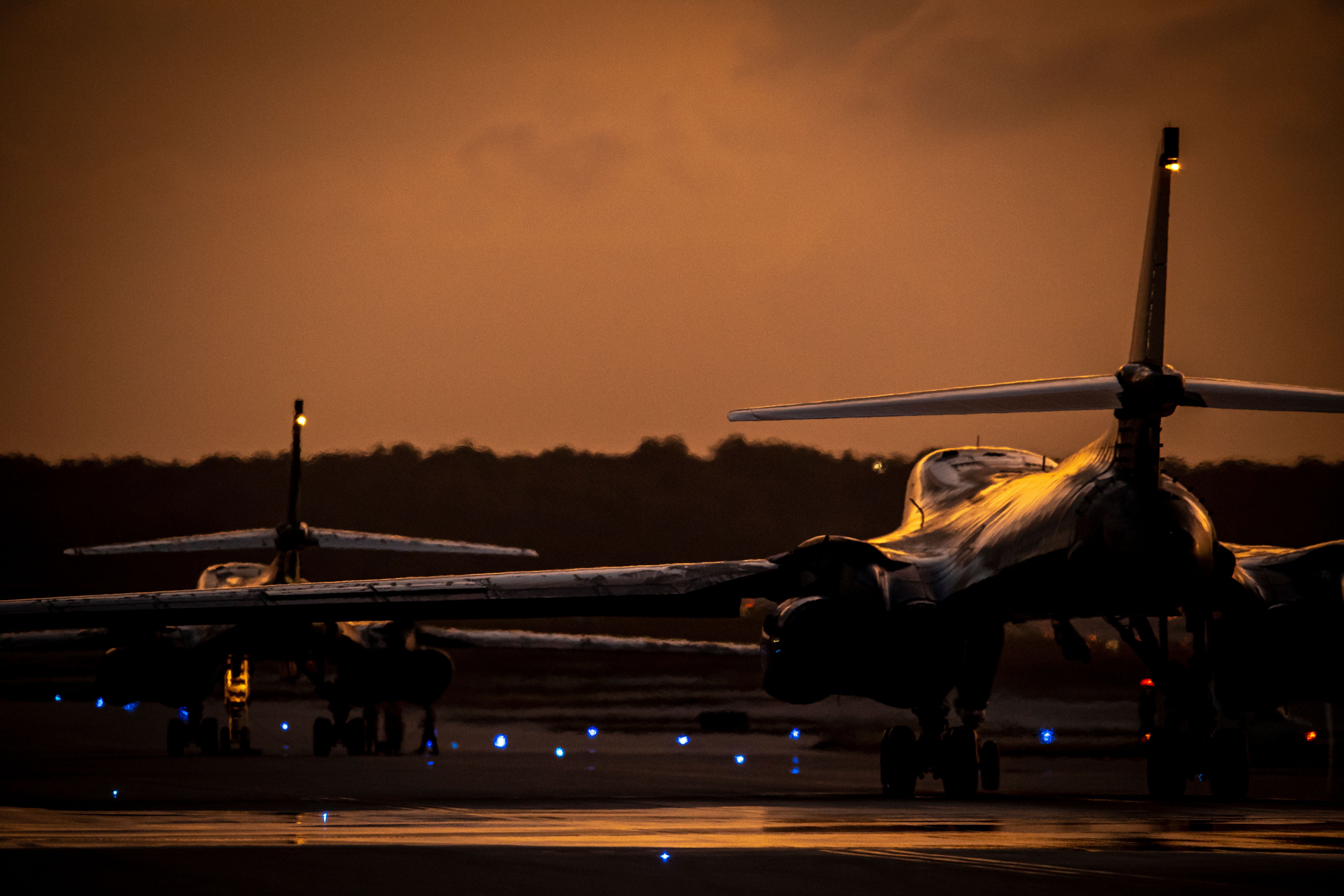
Originally intended to be a vital component of the US strategic deterrent, the Rockwell B-1 Lancer
now operates without an active nuclear option. Originally designed for nuclear missions during the Cold War, it became dependent on conventional payloads after going through formal disarmament procedures.
Since the middle of the 1990s, the Lancer conference has been centered on the same disarmament measures. The United States Air Force
took the bomber off frontline nuclear alert in response to changing military priorities, resource reallocation, and weapons control accords. With the support of a re-role blueprint that never completely disappeared, there is still interest in the potential to restore that function if necessary.
Photo: US Air Force
President George H.W. Bush ordered a $3 billion retrofit to remove the B-1B’s nuclear weapons capability around the time of the Soviet Union
‘s disintegration and the signing of the START nuclear arms pact with Russia
. As USAF records can confirm, the nuclear mission was officially withdrawn from regular Lancer operations in 2007, confirming the mission shift in two steps:
“During the first step a metal cylindrical sleeve was welded into the aft attachment point of each set of B-1 pylon attachments. This prevented installing B-1 Air Launched Cruise Missile pylons.”
“During the second step two nuclear armament-unique cable connectors in each of the B-1 weapons bays were removed. This prevented the pre-arm signal from reaching the weapons.”
Mutually Assured Destruction (MAD)
The B-1 did not deploy in the 1991 Gulf War, according to an Air & Space Forces report, because it remained on nuclear alert for any threats from the Soviet Union, which was still in operation. In order to avoid Soviet radar and, if needed, conduct nuclear attacks, crews back then continued to concentrate on a high-speed, low-level entrance profile.
Although it was initially developed for strategic deterrence, official reconfigurations turned it into a heavy hitter in regional conflicts.
Gen. Richard E. Hawley, head of Air Combat Command, noted, “When the B-1B force is fully matured, with all these modifications incorporated, and fully equipped with all these families of precision and near-precision weapons, it will be 10 times more capable–as measured by the number of targets that we can destroy–than the bomber force that we started with.”
As a result of the ambitious CMUP, the fleet of B-1s now boasts a vast arsenal of precision-guided, conventional weaponry. The B-1B is able to deliver large quantities of munitions with almost the same accuracy as laser-guided bombs once the Joint Direct Attack Munition and other members of the new standoff weapon family arrive. Around 2004, the new precise weapons family was installed on all B-1Bs.
The B-1B is now widely described by military officials as a “conventional-only” bomber, but the Pentagon reportedly maintains a “nuclear rerole plan” under which “spare” nuclear bombs for the aircraft are maintained in the Active Reserve Stockpile of US Strategic Command (STRATCOM) to quickly return the bombers to nuclear strike missions if necessary.
Photo: Boeing Defense
For a fleet of 63 aircraft, each reroled B-1 bomber would be armed with 16 nuclear bombs, or over 1,000 warheads total.
Speed and power
Long range, maneuverability, and high speed are all made possible by the B-1B’s blended wing/body structure, variable-geometry wings, and turbofan afterburning engines, which all improve survivability. Takeoffs, landings, air refueling, and in some situations involving the use of high-altitude weaponry, forward wing settings are utilized.
The primary combat configuration, the aft wing sweep settings, improves the B-1B’s mobility in both low- and high-altitude regimes and is usually employed during high subsonic and supersonic flight. Because of its speed and exceptional handling qualities, the B-1B may be easily incorporated into mixed-force packages. The B-1B is an essential component of any joint or composite strike force because of these characteristics, as well as its large payload, superior radar targeting system, lengthy loiter time, and high battlefield survivability.
Photo: US Air Force
As reported by Air & Space Forces, Colonel Glenn Spears, 28th Operations Group commander at Ellsworth AFB, explained that crew training emphasizes “defensive maneuvers and advanced handling of the aircraft,” which is not limited to low-level flight.
“The B-1B wings train our crews to use the full safe envelope of the aircraft’s capabilities,” Spears noted. “There’s no doubt that it’s a bomber, but it’s a very maneuverable bomber.”
Photo: US Air Force
“I want to strike as a package,” with F-15s for escort, F-16CJs equipped with HARM missiles for suppressing enemy air defenses, some F-16s for dropping bombs, and some F-15Es for dropping precision weaponry, he said. “I can fly by myself,” but he added, “I’m better in a package.” With great speed and accuracy, two B-1Bs could deploy 60 cluster bomb dispensers or 168 500-pound bombs.
“If we simulate that a threat has come up … we practice evading the threat and altering the route.” If there’s no path to “safely get my package out,” the B-1B will skip its target, and “I’ll survive to fight another day,” Spears said.
Photo: US Air Force
Six B-1s flew 2% of strike missions during Operation Allied Force in 1999, but delivered 20% of the ordnance. Similarly, during Operation Enduring Freedom, the B-1 flew 2% of sorties and dropped 40% of the precise munitions.
Bone by the numbers
The B-1A was developed in the 1970s as a replacement for the B-52, with four prototypes tested in the mid-1970s. The program was canceled in 1977 before production began.
The B-1B is an improved variant initiated by the Reagan administration in 1981. Major changes include an additional structure, improved radar, and a reduction in the radar cross-section, resulting in a maximum speed reduction to Mach 1.2.
Operation Desert Fox, which took place in December 1998, was the first time the B-1B was deployed in combat to support operations against Iraq. The aircraft delivered 43 percent of the JDAMs deployed in Operation Iraqi Freedom, but flew fewer than 1 percent of the combat missions.
“The B-1B holds almost 50 world records for speed, payload, range, and time of climb in its class. The National Aeronautic Association recognized the B-1B for completing one of the 10 most memorable record flights for 1994. The most recent records were made official in 2004.”
October 1984 saw the first production B-1 take to the air, while June 1985 saw the delivery of the first B-1B to Dyess Air Force Base in Texas. On October 1, 1986, initial operating capability was attained. On May 2, 1988, the last B-1B was delivered. Today, the B-1 is still in use, conducting sorties every day to support ongoing operations.
Take a look at the key data and metrics that outline the technical profile of the B-1 Lancer:
- Primary Function: Long-range, multirole, heavy bomber (can haul a large range of conventional ordnance)
-
Contractor:
 Boeing
Boeing, North America (formerly Rockwell International, North American Aircraft); Offensive avionics by Boeing Military Airplane; Defensive Avionics by EDO Corporation
-
Power Plant: Four
General ElectricF101-GE-102 turbofan engines with afterburner
- Thrust: 30,000-plus pounds (13,607-plus kilograms) with afterburner, per engine
- Wingspan: 137 feet (41.8 meters) extended forward, 79 feet (24.1 meters) swept aft
- Length: 146 feet (44.5 meters)
- Height: 34 feet (10.4 meters)
- Weight: approximately 190,000 pounds (86,183 kilograms)
- Maximum Takeoff Weight: 477,000 pounds (216,634 kilograms)
- Fuel Capacity: 265,274 pounds (120,326 kilograms)
- Payload: 75,000 pounds (34,019 kilograms)
- Speed: 900-plus mph (Mach 1.2 at sea level)
- Range: Intercontinental
- Ceiling: More than 30,000 feet (9,144 meters)
- Armament: 84 500-pound Mk-82 or 24 2,000-pound Mk-84 bombs; up to 84 500-pound Mk-62 or 8 2,000-pound Mk-65 mines; 30 cluster munitions (CBU-87, -89, -97) or 30 WCMD (CBU-103, -104, -105); up to 24 2,000-pound GBU-31 or 15 500-pound GBU-38 JDAMs; up to 24 AGM-158A JASSMs; 15 GBU-54 Laser JDAMs
- Crew: Four (aircraft commander, copilot, and two combat systems officers)
- Unit Cost: $317 million
- Initial Operating Capability: October 1986
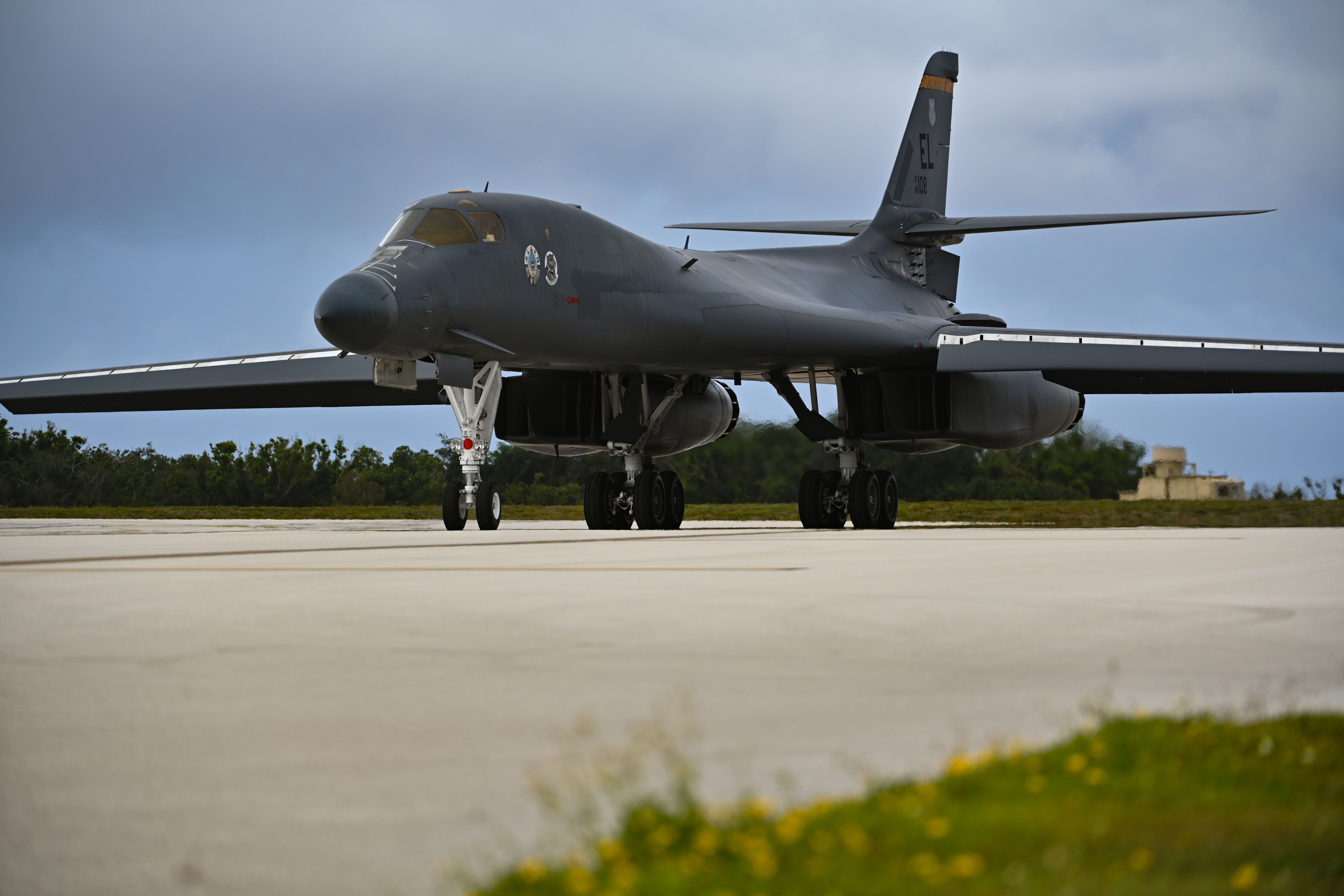
Related
Why The US Air Force Is Bringing B-1 Bombers Out Of The Boneyard At Davis-Monthan AFB
The USAF Rockwell B-1 bomber will be replaced by the Northrop Grumman B-21 Raider.
Bottom line
In the current force organization, the B-1 is not assigned nuclear responsibilities. Conventional is the official mission. Standard nuclear weapons were excluded by a number of treaties and expensive modifications, and crews only receive training for regional or international battles without nuclear targets. There is a residual re-role plan, but as strategic deterrence is dependent on the B-2, b-52
H, and the upcoming Northrop Grumman B-21 Raider
, reactivation is unlikely.
Photo: US Air Force
The Nuclear Posture Review (NPR) in 1994 confirmed that the reorientation of the B-1 to a conventional aircraft would not preclude the return of the B-1 fleet to a strategic nuclear role. Portraying the B-1 as conventional-only was crucial to relieving the aircraft of its burdensome image as a nuclear relic of the Cold War.
The expensive B-2 Spirit Bomber
program had already been cut to 21 aircraft, so shifting the B-1 to conventional missions increased its utility in real-world operations. However, ACC and STRATCOM were tasked to ensure that the conventional upgrades would not preclude future nuclear capabilities or demand high costs to maintain an immediate nuclear capability.
The Nuclear Rerole Plan assumes that the B-1’s nuclear mission will take priority over its conventional mission. Although a one-time rerole of a nuclear bomber to its former nuclear mission is legally permitted under the START II treaty, maintaining this capability undermines the US national security goal of ensuring transparency and irreversible nuclear disarmament.
The upgrade also saved money by reducing the number of accountable bomber weapons and reducing the cost of maintaining full nuclear capability.
The bomber’s continued value in non-nuclear operations is further supported by the US Air Force’s willingness to retrieve older airframes from storage in the desert. The simple answer is still that, although the B-1B is technically capable of regaining its nuclear status, the current environment keeps it firmly in the conventional world.
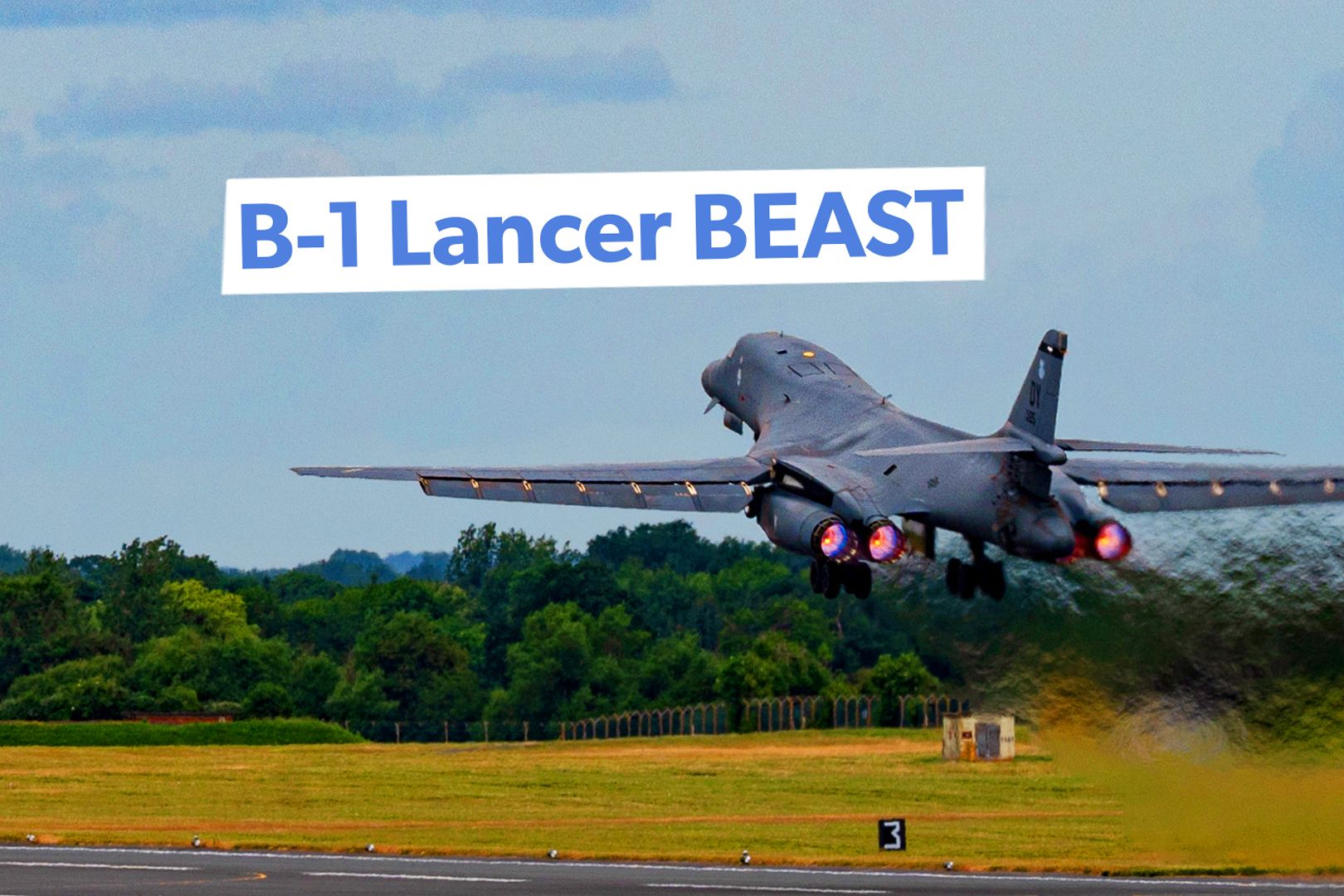
Related
5 Fast Facts On The B-1 Lancer’s BEAST Upgrades
The B-1 is receiving its BEAST upgrades as fast as possible and these will keep it lethal into the 2040s.


